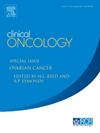用于放射治疗计划的人工智能:缩小从回顾性承诺到临床现实的差距。
IF 3.2
3区 医学
Q2 ONCOLOGY
引用次数: 0
摘要
人工智能(AI)放射治疗规划有望提高放射治疗规划过程的一致性和效率。尽管在技术上取得了进步,但将人工智能广泛集成到 RT 治疗计划中仍面临着挑战。从受控的回顾性环境过渡到真实的临床环境,临床终端用户的审查力度加大,可能导致临床接受度降低。实施人工智能 RT 规划的主要考虑因素包括确保人工智能模型的性能符合临床标准、使用高质量的训练数据,以及通过临床专家的精心策划纳入足够的数据变化。除了技术方面,潜在的偏差和临床最终用户对人工智能的信任程度等因素也可能给实际临床应用带来不可预见的障碍。要应对这些挑战,就必须缩小临床终端用户在教育和专业知识方面的差距,使他们能够自信地接受并利用人工智能进行常规 RT 规划。通过增进对人工智能功能的了解、建立信任和提供全面培训,人工智能 RT 规划的承诺就能在临床环境中变为现实。本文评估了目前人工智能 RT 规划的临床应用情况,并探讨了弥补人工智能操作化知识和专业技能差距的挑战和注意事项,重点关注培训数据整理、工作流程整合、可解释性、偏差和领域知识。此外,还结合建立信任的方法,探讨了人工智能 RT 治疗规划在临床实施中仍然面临的挑战。本文章由计算机程序翻译,如有差异,请以英文原文为准。
Artificial Intelligence for Radiation Treatment Planning: Bridging Gaps From Retrospective Promise to Clinical Reality
Artificial intelligence (AI) radiation therapy (RT) planning holds promise for enhancing the consistency and efficiency of the RT planning process. Despite technical advancements, the widespread integration of AI into RT treatment planning faces challenges. The transition from controlled retrospective environments to real-world clinical settings introduces heightened scrutiny from clinical end users, potentially leading to decreased clinical acceptance.
Key considerations for implementing AI RT planning include ensuring the AI model performance aligns with clinical standards, using high-quality training data, and incorporating sufficient data variation through meticulous curation by clinical experts. Beyond technical aspects, factors such as potential biases and the level of trust clinical end users place in AI may present unforeseen obstacles for real-world clinical use.
Addressing these challenges requires bridging education and expertise gaps among clinical end users, enabling them to confidently embrace and utilize AI for routine RT planning. By fostering a better understanding of AI capabilities, building trust, and providing comprehensive training, the promises of AI RT planning can be a reality in the clinical setting.
This article assesses the current clinical use of AI RT planning and explores challenges and considerations for bridging gaps in knowledge and expertise for AI operationalization, with focus on training data curation, workflow integration, explainability, bias, and domain knowledge. Remaining challenges in clinical implementation of AI RT treatment planning are examined in the context of trust building approaches.
求助全文
通过发布文献求助,成功后即可免费获取论文全文。
去求助
来源期刊

Clinical oncology
医学-肿瘤学
CiteScore
5.20
自引率
8.80%
发文量
332
审稿时长
40 days
期刊介绍:
Clinical Oncology is an International cancer journal covering all aspects of the clinical management of cancer patients, reflecting a multidisciplinary approach to therapy. Papers, editorials and reviews are published on all types of malignant disease embracing, pathology, diagnosis and treatment, including radiotherapy, chemotherapy, surgery, combined modality treatment and palliative care. Research and review papers covering epidemiology, radiobiology, radiation physics, tumour biology, and immunology are also published, together with letters to the editor, case reports and book reviews.
 求助内容:
求助内容: 应助结果提醒方式:
应助结果提醒方式:


